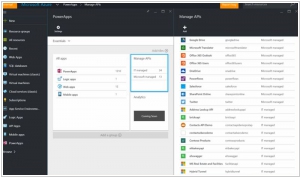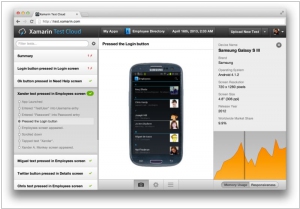Microsoft PowerApps vs Xamarin
May 17, 2023 | Author: Sandeep Sharma
Microsoft PowerApps and Xamarin are both powerful development platforms, but they serve different purposes and have distinct characteristics. Microsoft PowerApps is a low-code development platform that allows users to create and deploy custom business applications without extensive coding knowledge. It offers a visual interface, pre-built templates, and a wide range of connectors to integrate with various data sources. PowerApps is primarily focused on creating mobile and web applications for business processes and workflows, with an emphasis on rapid development and simplicity. On the other hand, Xamarin is a cross-platform development framework that enables developers to build native mobile applications for iOS, Android, and Windows using a single codebase. It provides full access to native APIs, allowing for highly performant and native-like user experiences. Xamarin is suitable for developers who prefer to write code and require more control over the application's behavior and performance.
See also: Top 10 Mobile App Builders
See also: Top 10 Mobile App Builders
Microsoft PowerApps vs Xamarin in our news:
2017. Xamarin now lets run and test iOS apps directly from Windows
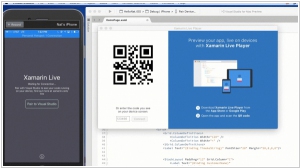
Until now, Xamarin by Microsoft has enabled developers to create iOS applications within Visual Studio. However, building and testing these apps still required a Mac. The introduction of Xamarin Live Player changes this scenario by allowing developers to deploy, run, test, and debug iOS apps directly from a Windows PC running Visual Studio. To utilize this new functionality, developers need to install the Xamarin Live Player app on their iOS device and pair it with their PC by scanning a QR code displayed on their screen. By offering this capability, Microsoft is bridging the gap for most developers and moving closer to its goal of positioning Windows 10 as the preferred operating system for cross-platform development.
2016. Microsoft launched its no-coding app builder
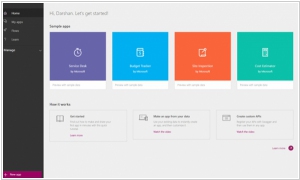
Microsoft has introduced a new service called PowerApps, enabling individuals to create basic business apps without requiring any coding skills. These apps are compatible with both web and mobile platforms, including the PowerApps apps for iOS and Android. Developing apps in PowerApps primarily involves a drag-and-drop approach. While the service provides an online dashboard, the actual design work is performed using a Windows 10 desktop app. Additionally, PowerApps offers several pre-designed templates for common use cases. Although building new apps from scratch is generally straightforward, it may not be as effortless as portrayed in Microsoft's marketing materials.
2016. Microsoft's development platform Xamarin integrates with Visual Studio
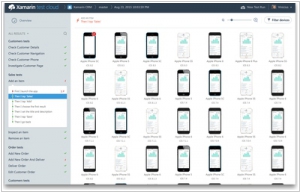
Following its recent acquisition by Microsoft, Xamarin, the cross-platform development platform, has released updates to enhance almost all of its core features. Xamarin has made its SDKs for Android, iOS, and Mac open-source under the MIT license. These SDKs encompass command-line tools for application development, as well as the cross-platform Xamarin.Forms UI framework. However, the Xamarin IDE for Mac will remain closed-source at present. Many of the new functionalities are integrated with Microsoft's tools, particularly Visual Studio. For instance, iOS developers can now utilize Xamarin's iOS Simulator directly from Visual Studio on Windows, though the simulator itself still requires a networked Mac and Visual Studio establishes a remote connection to it. Additionally, Visual Studio/Xamarin users can deploy apps to iOS devices connected to the Windows machine's USB port directly from Visual Studio.
2016. Microsoft acquired mobile development service Xamarin
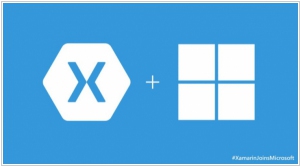
Microsoft has acquired Xamarin, a service that enables developers to create fully native applications for multiple platforms using a single shared code base. Since announcing a global partnership in 2013, Microsoft and Xamarin have collaborated closely to simplify the process of building native apps on various platforms within Visual Studio. This acquisition will significantly enhance Microsoft's collection of developer tools and facilitate the growth of mobile and Universal apps for Windows 10 devices. The integration of Xamarin, Visual Studio, Visual Studio Team Services, and Azure will offer a comprehensive solution for mobile app development, encompassing everything necessary to create, test, deliver, and monitor mobile apps across all devices.
2015. Xamarin improves its mobile app development platform
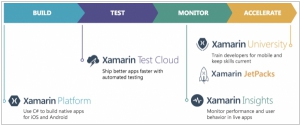
Xamarin, the platform for cross-platform mobile app development with a focus on C#, has unveiled its latest version. This update brings forth a range of new features across Xamarin's suite of tools, which now encompasses frameworks, emulators, mobile app testing services, and analytics. The primary objective is to simplify the overall service and offer developers a more unified experience throughout Xamarin's expanding array of tools and services. As an example, users of Xamarin Studio and Visual Studio can now directly access tests on the Xamarin Test Cloud from their integrated development environments (IDEs). Additionally, the code required for implementing the Xamarin Insights app monitoring service, which aids in identifying performance issues and crashes, is now automatically integrated into project templates. Alongside this update, Xamarin is also making Insights available for general use.

